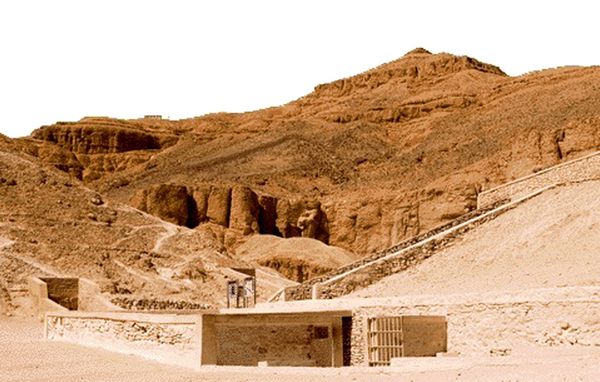Athena Review Image Archive ™
Valley setting of the tomb of Tutankhamun
.

Valley setting of the tomb of Tutankhamun
Earlier clues to the location of the tomb came during 1908 excavations by Theodore Davis, in an area just beyond the left edge of the image. Davis, who was seeking Horemheb's tomb, had found items including floral collars with inscriptions on Tutankhamun near the tomb of Ramesses VI. These collars are now in the Metropolitan Museum in New York.
The British archaeologist Howard Carter, who had been funded for years by Lord Carnavon in search of "Tut's" tomb, initially explored the area around Ramesses VI's tomb but failed to find it. He then searched fruitlessly in other parts of the Valley of the Kings. In November, 1922 Carter finally found the tomb of Tutankhamun beneath the house foundations of workmen who, two centuries after the burial of Tutankhamun, had constructed Ramesses VI's tomb.
The original seals on the outer door of the tomb were intact, and Carter telegraphed his patron to join him during the discovery of the tomb's contents in 1922-1923. Aside from a few minor pilferings by workmen contemporary with the burial of Tutankhamun (some of whom had been surprised by tomb guards during robbery, and had left items wrapped in cloth satchels), the lavish funishings of the tomb remained as originally placed after the young monarch's premature death in ca. 1325 BC.
Copyright © 1996-2019 Rust Family Foundation (All Rights Reserved).